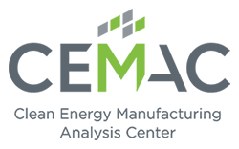Piecing Together the Fragments: the Importance of Independent Supply Chain Analysis to Private Industry
June 21, 2020
By Steven Freilich, Vice-Chair CEMAC Advisory Committee, DuPont (emeritus)
CEMAC's Benchmarks of Global Clean Energy Manufacturing is a tour de force of data collection and unbiased interpretation from honest brokers. It demonstrates the importance of independent analysis for private industry, which is often difficult for those industries to accomplish on their own.
The Benchmark report contains exactly the type of information that industry yearns to obtain, but struggles to collect without prejudice. In my experience managing a manufacturing business, understanding the manufacturing environment was critical to our ability to succeed. We treated every piece of market information like it was a sliver of the Dead Sea Scrolls—a piece that fit into a greater whole which, while it couldn't predict the future, could tell us a lot about the past.
The message of the Benchmark report lies deeper than the raw data and the immediate conclusions they suggest. The details of the value chains captured within the report provide profound and necessary insights. Understanding relevant value chains is probably the most important thing a business needs to obtain in order to develop its strategy. Value chain analyses enable a clear determination of which strategies for growth will work and which will not. The analyses can tell you where innovation can be injected, how to profit from the innovation, and what the competitive response might be. The Benchmark report provides much of the information and analysis that can inform such decisions in the world of clean technology.
As a nation, we are entering challenging times. American businesses are abandoning the role of driving innovation and replacing long-term views with short-term thinking. Large, vertical corporations are "increasing their focus," which is financial shorthand for smaller, less diverse, and less financially complicated companies that are more transparent to investors. This tends to drive companies to reduce their research and development activities while they concentrate almost exclusively on their existing businesses. Such companies will be less willing to take risks and more dependent on the world outside their walls to deliver inventions. But without in-house research, development, and prototyping capability, industry will have a hard time realizing the new technologies and converting inventions to innovations that will be important to their futures.
In this business climate, CEMAC can and will play an important role in helping industry look at clean energy manufacturing as part of an ecosystem—examining the connectivity between the various manufacturing supply chains that may not be obvious at first blush. This type of information can be extremely helpful to companies, showing where they might expand and how their existing infrastructure can support new growth with reduced risk.
In its first years of existence, CEMAC has already begun to serve an important function in the clean technology space. The foundation has been laid for CEMAC to expand its importance to both investors and corporate leaders as the political and business climates continue to evolve and to change.

